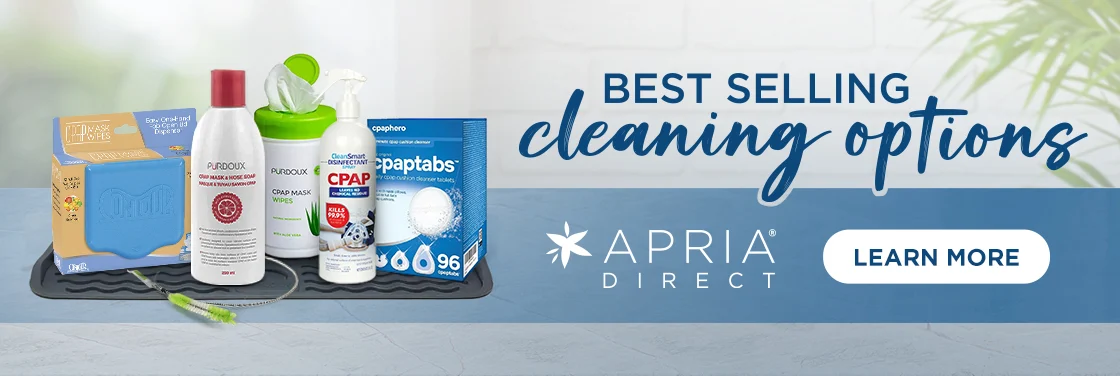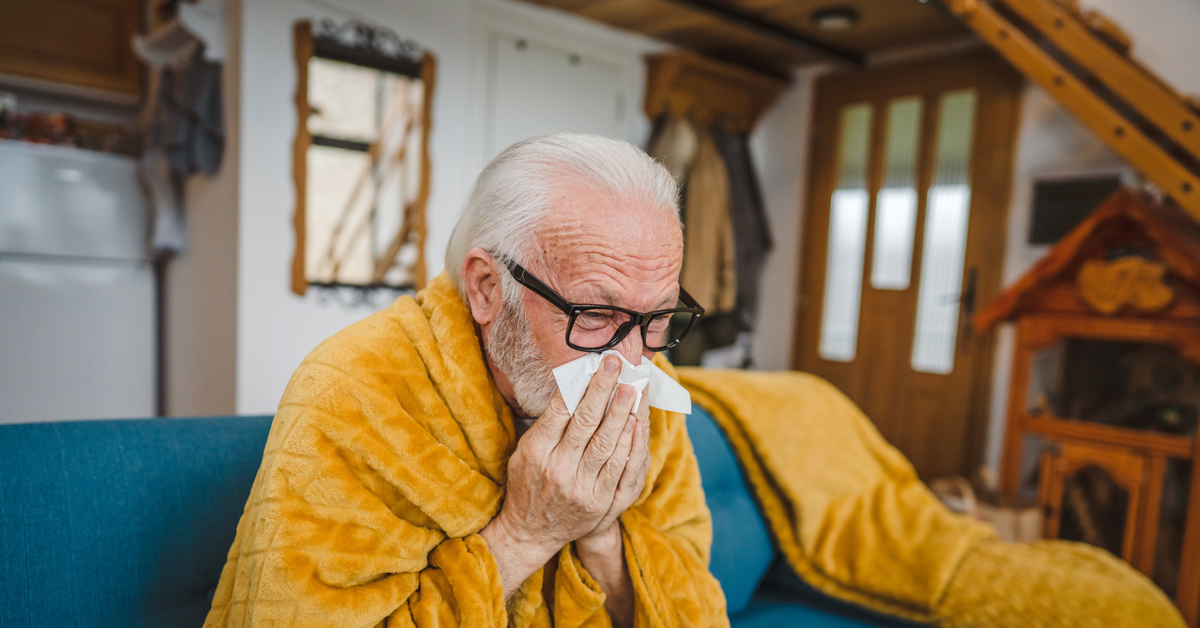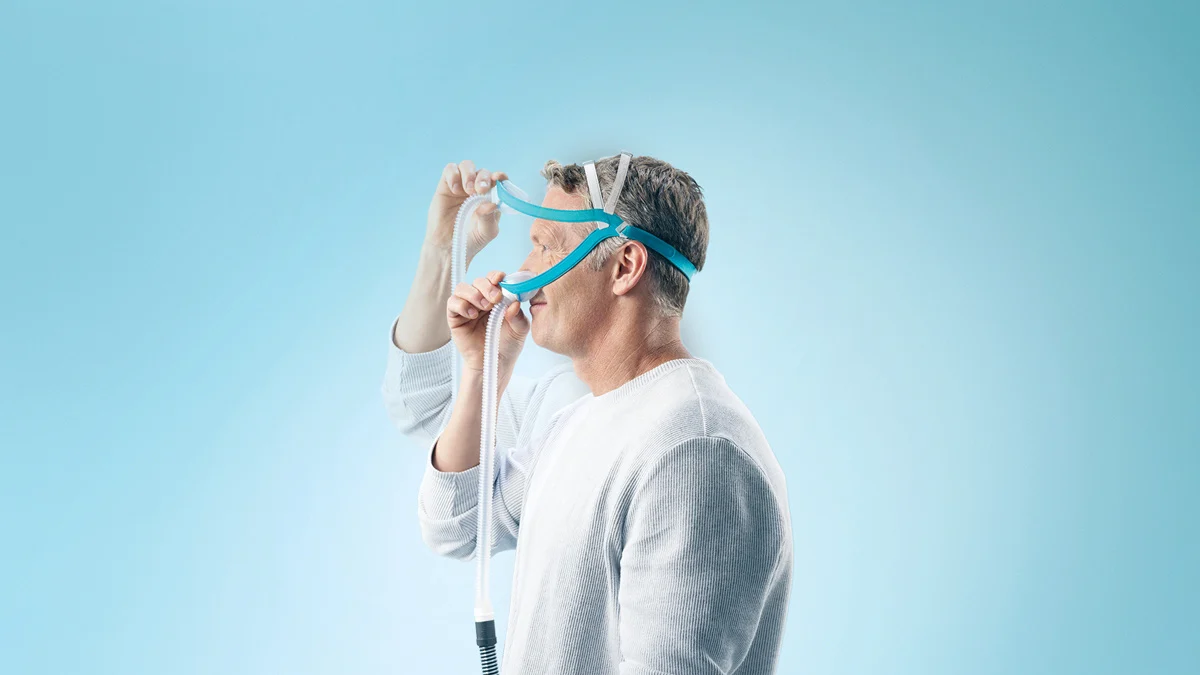Keeping Your Equipment Clean and Well-Maintained is the Secret to Effective Therapy. Here are Helpful Tips.
For people with COPD (chronic obstructive pulmonary disease), oxygen therapy is a simple, effective method to increase blood oxygen levels—and help make breathing easier so you can go about your daily activities.
To ensure you receive the oxygen therapy your doctor has prescribed, all your oxygen therapy equipment must work properly.
Lesley Williams, Apria’s Market Clinical Trainer and a registered respiratory therapist, says, “The key is to know how to keep all your oxygen therapy components clean and well-maintained.”
After reading this article, you’ll be able to quickly and efficiently keep your equipment in good condition so you receive uninterrupted oxygen therapy.
The Importance of Cleaning
It’s critical that the various components of your oxygen delivery system be cleaned as suggested. These include your compressed oxygen or liquid oxygen tank, oxygen concentrator, nasal cannula, facemask, tubing, and humidifier.
Cleaning helps prevent the buildup of bacteria, mold, dust, and germs, which may cause such conditions as pneumonia or other respiratory infections. And because COPD weakens the immune system, you are even more prone to illness.
Cleaning your equipment and replacing parts when necessary also keeps your oxygen delivery system working properly so you get the therapy you need.
Lesley wants to remind you, “Regular cleaning helps keep you healthy—and your oxygen therapy equipment in good shape.”
The Basics of Cleaning
Once you get into the habit, you’ll find that cleaning your equipment is easy and can be done quickly.
The cleaning supplies you’ll need are simple too:
- Warm, clean water
- Mild soap (although don’t use harsh dish detergents, alcohol, bleach, strong-smelling products, scented oils, or antibacterial soaps. Never use anything flammable!)
- Clean, dry towels
- A sink, tub, or basin large enough to hold your hose or tubing
Also, reserve enough space to allow your equipment to dry.
To help ensure your equipment is clean, make sure your home is clean as well. Keep the indoor air free from allergens, dust, and mold.
When you’re sick, replace your disposable supplies after your sickness has passed to prevent other infections.
And remember: whenever using your oxygen equipment, be sure to wash your hands often.
Cleaning and Maintaining Your Oxygen Therapy Delivery Devices
Your compressed oxygen or liquid oxygen tank
Compared to other oxygen therapy accessories like nasal cannulas and facemasks, these tanks are relatively easy to clean.
Use a damp cloth to wipe and dust and dirt from the exterior of the tank. And inspect them often to make sure they are working properly.
To prevent damage and store safely, keep oxygen tanks in a well-ventilated space and an upright position.
Compressed oxygen and liquid oxygen tanks need to be refilled or replaced regularly. Be sure to keep track of your oxygen use so your tanks can be replaced or refilled on time.
Your oxygen concentrator
Oxygen concentrators draw air from your surroundings, separate and remove nitrogen and other gases, and deliver purified oxygen to breathe.
Because they deliver a never-ending supply of oxygen, they don’t have to be refilled or replaced like oxygen tanks. But they do need to be cleaned every week.
First, unplug the oxygen concentrator. Then use a damp, slightly soapy cloth to wipe off any dirt or grime from the exterior of the unit. Dry with a towel. Never submerge your oxygen concentrator in water.
It is also important to clean your oxygen concentrator’s filters every week. Wash them in warm, soapy water, pat them dry with a clean towel, then place them in a clean spot with lots of circulation to finish drying. Allow the filter to dry completely before placing back in the concentrator.
Keep an extra set of filters handy in case one gets torn. And replace filters as suggested by the manufacturer.
Cleaning and Maintaining Your Oxygen Therapy Accessories
Your nasal cannula and facemask
Many people on oxygen therapy use a nasal cannula, which is a small tube with prongs inserted into your nostrils.
Others use a facemask, which covers your mouth and nose and is often used for people who can’t tolerate nasal cannulas or need more oxygen than a cannula can supply.
Nasal cannulas and facemasks should be washed at least once a week. Wash in warm, soapy water then rinse well with hot water, and hang to dry.
If you notice any mucus buildup, clean more often.
You should also replace your cannula or mask every 2-4 weeks—and change them every time you get sick.
We also recommend you keep a spare cannula or mask on hand in case of accidents or damages.
Your extension tubing
This is the long tubing—typically about 25 feet in length—that connects your nasal cannula or oxygen mask to your compressed oxygen tank, liquid oxygen, or oxygen concentrator.
Extension tubing should be replaced every 2 months. But inspect it often; if you see any tears or cracks, replace it with new tubing immediately.
This tubing should not be washed or submerged in water, which can cause mold to form inside it. Instead, wipe the outside of the tubing.
Cleaning and Maintaining Your Humidifier
Oxygen therapy can dry out your nose and airways especially flows above 5 liter per minute. That’s why many people with COPD have a humidifier attached to their oxygen delivery system. It adds moisture to prevent nasal dryness and nosebleeds—and makes oxygen therapy more comfortable.
Humidifiers need be cleaned anytime water is added. Discard any remaining water, wash the humidifier with soap and water, rinse thoroughly, and let it dry. Then refill it with distilled water, not tap water, which contains minerals that can damage your equipment. Twice weekly your humidifier should be cleaned using a white vinegar and water solution. Empty the humidifier bottle, wash as you normally would and mix together one-part white vinegar and one-part water. Soak the entire humidifier bottle for 30 minutes in the vinegar solution. After it has soaked, take the bottle out and rinse thoroughly. Allow the bottle to air dry and use normally.
Keep It Clean
Keeping your oxygen therapy equipment clean and well-maintained is the most effective way to reduce your risk of respiratory infections and illness and to ensure you receive all the benefits of your oxygen therapy.
If you have questions about how often to clean or replace your components, speak with your doctor or oxygen therapy equipment supplier.
You’ll breathe more easily knowing your equipment is clean and working properly.
References
1. Your Oxygen Equipment. UCSF Health. https://www.ucsfhealth.org/education/your-oxygen-equipment.
2. Heavner, J., Marcus, G. How to Clean and Maintain Your Oxygen Equipment. University of Maryland Medical System. https://health.umms.org/2022/10/24/maintain-your-oxygen-equipment/.
3. MacNaughton, K. (2017, December 27). Care and Cleaning of Your Oxygen Equipment. COPD.net. https://copd.net/living/cleaning-oxygen-equipment.
4. Kingsley, C. How To Keep Your Oxygen Equipment Clean. Lung Institute. https://lunginstitute.com/keep-oxygen-equipment-clean/.
5. Managing Supplemental Oxygen Supplies. National Emphysema Foundation. https://www.emphysemafoundation.org/index.php/about-uss/privacy/97-therapeutic-toolbox-articles/519-managing-supplemental-oxygen-supplies.
6. Using Oxygen at Home. American Lung Association. https://www.lung.org/getmedia/a3d0c90d-9b94...
LEGAL DISCLAIMER: Material in this newsletter is provided for general health education and informational purposes and to provide references to other resources only; it may not apply to you as an individual. While Apria Healthcare believes that the information provided through this communication is accurate and reliable, Apria Healthcare cannot and does not make any such guarantee. It is not intended to be a replacement for professional medical advice, evaluation, diagnosis, services or treatment (collectively, “medical treatment”). Please see your healthcare provider for medical treatment related to you and your specific health condition(s). Never disregard medical advice or delay seeking medical care because of something you have read on or accessed through this website. Reading this newsletter should not be construed to mean that you have a healthcare provider/patient relationship.


.png)



